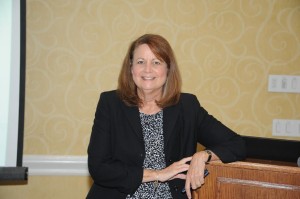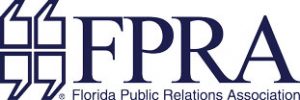By Amanda Handley (Capital Chapter)

Big Ideas:
- Copyrights don’t protect ideas, procedures or facts. Copyrights protect the expression of those things.
- The purpose of a copyright, according to the Founding Fathers, was to encourage progress through the advancement of the arts and sciences; to reward creative efforts and to promote societal knowledge.
- Who owns a copyright can be complicated.
- If you work for hire, chances are your employer owns the copyright.
- If you are a freelancer or an independent contractor, you could own the copyright or your client could, depending on the terms of your contract.
Chance then shared common copyright myths.
Myth: You must register and pay a fee to obtain a copyright.
Reality: Your copyright exists from the moment the work is created and fixed in tangible form. However, there are benefits to registering and paying the fee. You cannot sue anyone for copyright infringement unless you have a registered copyright, and you can only sue for “actual damages” if you register after the infringement has occurred. If you have registered your copyright before the infringement happens, you can also sue for “statutory damages,” which are approximately three times more.
Myth: Including a credit line is enough to avoid copyright infringement.
Reality: The law requires actual permission from the copyright holder.
Myth: I found it online, so it’s in the public domain and available for use.
Reality: Copyright laws protect pictures, videos and audio files on the Internet. For free images, try sources like Flickr, free stock photography sites and Creative Commons.
Myth: Work without a copyright note isn’t protected.
Reality: Since 1989, a copyright notice has been optional.
Myth: I can never use someone else’s material.
Reality: Infringement is OK if your use qualifies as “fair use.” Specifically, if your use is for criticism, commentary, review, education, etc., that would be considered “fair use.”
Myth: I own pictures and videos I post on sites like Facebook, Twitter and Instagram.
Reality: It depends. As a creator, you own the rights to copy, use, produce, distribute and perform. If you’re the subject of the photo, you also have a right of publicity, which would pay you a royalty fee. However, as soon as you post it, you grant the social media site a license to use the content any way it sees fit.
Myth: I can safely use up to 250 words or 60 seconds of audio/video without violating copyright laws.
Reality: There is no minimum/maximum requirement for copyright infringement.
Myth: If I’m not making money from the use of the copyrighted material, it’s a “fair use.”
Reality: The copyright holder has control of the use. You don’t have to affect the market to infringe upon the copyright.
Chance concluded with these helpful copyright checklists:
Do I own the copyright?
- Did I create this?
- Did one of my employees create this?
- Was it a work-for-hire employee or a freelance employee?
If someone else created it, can I use it?
- Is it in the public domain?
- Do I have permission?
- Have I paid for the appropriate use?
- How will I use it?
- Will it qualify as “fair use”?

McClatchy Professor in Freedom of Information, Executive Director, Brechner Center for Freedom Information, Professor – Journalism Department, College of Journalism and Communications, University of Florida
Dr. Sandra Chance specializes in media law. Before joining the faculty at University of Florida, Chance earned her bachelors, masters and juris doctor degrees and practiced law with the firm of Holland & Knight. She concentrated on media law cases and her clients included The Tampa Tribune, the New York Times Regional Group (including The Gainesville Sun), The Miami Herald, and several radio and television stations throughout the southeast. She was named the Scripps-Howard National Journalism Teacher of the Year in 2005 and the College’s Outstanding Teacher of the Year in 1997. She teaches media law at both the undergraduate and graduate levels.
